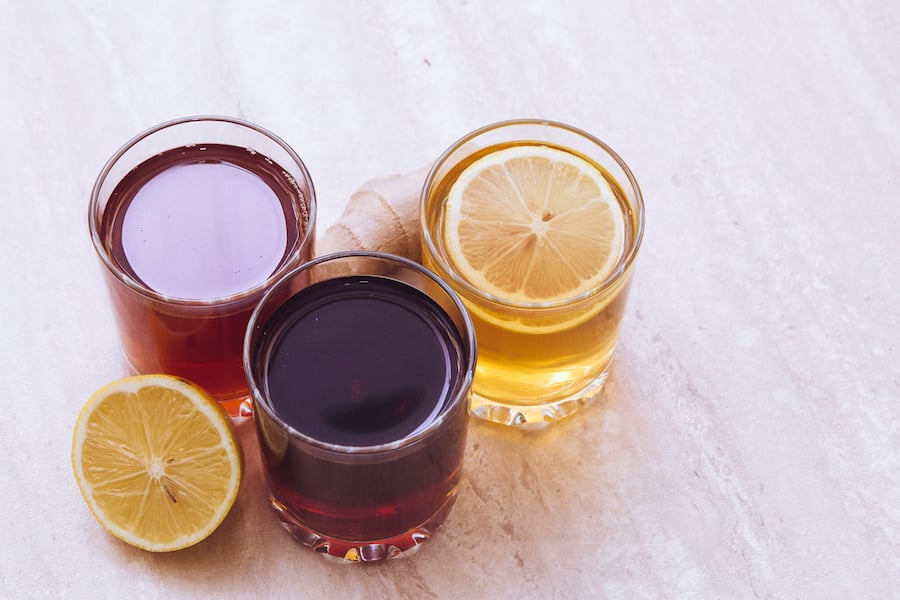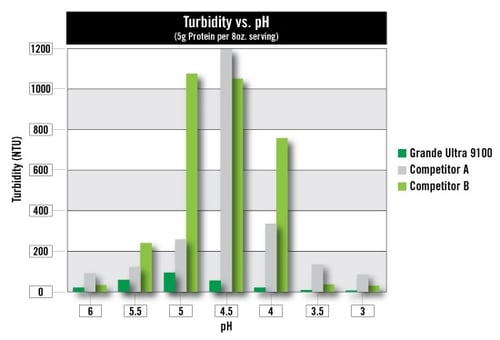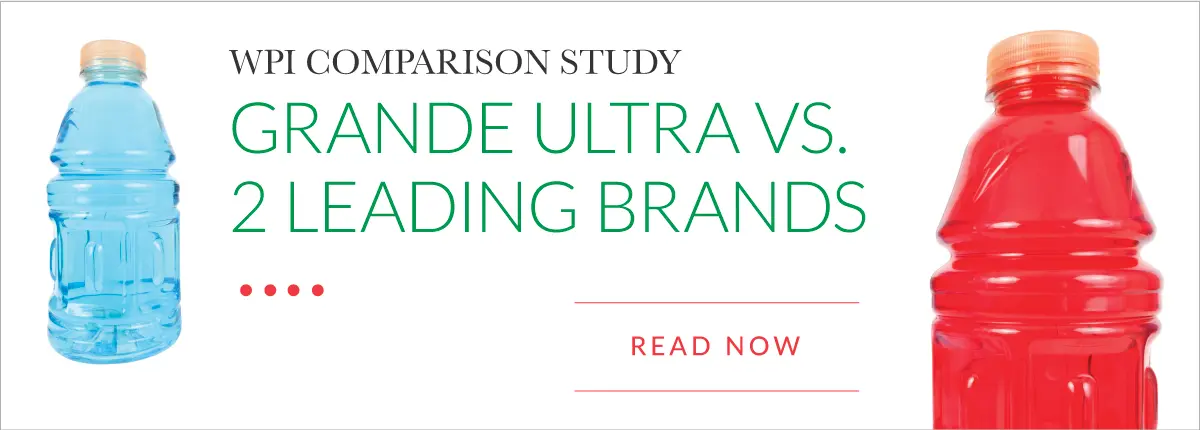 Consumers increasingly prefer tart and tangy taste sensations, which explains why sugary drinks and sodas are losing shelf space to trending sour flavors in beverage aisles. Sour foods are often associated with various health benefits, which is a major factor driving the trend.
Consumers increasingly prefer tart and tangy taste sensations, which explains why sugary drinks and sodas are losing shelf space to trending sour flavors in beverage aisles. Sour foods are often associated with various health benefits, which is a major factor driving the trend.
Boosting nutrition in RTD beverages by adding protein is also on the rise, with the protein beverage market expected to grow 5.25% over the next few years. Combining both trends could be a boon for food and beverage manufacturers that want to gain greater market share, but there are major formulation challenges that need to be overcome.
A neutral pH level is typically considered around 7. However, the acidity and pH levels of many trending beverages is substantially lower and not conducive to the addition of protein, which typically results in unappealing turbidity. Let’s take a look at five trending tart and acidic flavor profiles in beverages, then address how to overcome the challenge of adding protein.
1. Cold Brew Coffees
Coffee pH: 5
What’s hot? Cold coffee sales. Globally, iced, ready-to-drink (RTD) product launches increased by 19% in 2017 and, in the U.S., 56% of new RTD coffee introductions were cold brew. Mintel reports the market is the fastest growing segment in RTD beverages and could see a 67% growth rate before 2022 after already having grown 460% from 2015–2017 alone.
Unlike a typical coffee beverage, cold brew coffee requires soaking coffee grounds for 12 hours or more, making it inconvenient and impractical for the average consumer to do at home. The convenience factor of bottled or canned RTD cold-brew coffee is a major driving force in its popularity, and protein-packed iced coffee is gaining appeal, especially among low-carb and fitness communities.
2. A Twist on Citrus Flavors
Fruit Drink pH: 2.7 – 3.5
Technomic’s 2018 Beverage report stated a main driver of the industry for restaurant goers is wanting to try new flavors. While plain old fruit juices and lemonade have been popular consumer choices for decades, new fruit flavors are emerging on the market. Hibiscus infused lemonade, prickly pear cactus, bergamot orange, makrut lime, pomelo, Meyer lemon, blood orange, dragon fruit and more are appealing to the adventurous taste buds of consumers.
These flavor profiles are showing up on grocery and convenience store shelves in the form of clear beverages and smoothie drinks. Protein-infused beverages continue to gain popularity, appealing to the 55% of consumers who say protein is an important consideration when making purchases.
3. RTD and Powdered Teas
Tea pH: 3 – 5
Teas are commonly associated with numerous health and wellness benefits. Their antioxidants, immune-boosting properties and ability to improve digestion are more widely known, but some types of tea are reported to help with weight loss, reduce occurrences of heart attacks and stroke, and even protect against bone loss and cancer.
In demand are premium artisanal and herbal teas that claim authentic brewing techniques. This factor is resulting in a slow decline of some powdered forms, which emphasizes the importance of clean labels and minimal additives. Innovative formulators are capitalizing on its health claims by blending tea with other categories, such as sparkling beverages and sports and energy drinks containing protein.
4. Fermented Flavors
Kombucha pH: 2.5 – 3.5
Once limited to drinkable yogurt, fermented protein drinks like Kombucha — a tea subcategory — have taken the RTD beverage market by storm. Despite having been around for more than 2,000 years, the Kombucha market is expected to experience a compound annual growth rate (CAGR) of 25.6% by 2023. Once again, driving the growth are the many purported health benefits associated with this ancient, Asian-inspired drink.
The beverage is fermented with bacteria and yeast, resulting in a slightly effervescent final product that boasts probiotics, amino acids, antioxidants and numerous other characteristics. Products are evolving as beverage manufacturers look for ways to differentiate themselves in what will inevitably become a saturated market. Adding a clean protein source can provide additional health benefits to this “new” superfood.
5. Apple Cider Vinegar & Brines
Apple Cider Vinegar pH: 3.5
Pickle juice slushie, anyone? Heading further down the fermented flavor trail, apple cider vinegar-infused beverages and vegetable brines are gaining market share as well. Long popular as a natural health product, apple cider vinegar has many wellness benefits including weight loss, reduced cholesterol, lower blood sugar and more. Brines are commonly known to contain naturally occurring electrolytes that cater to those in the health and fitness communities, and a surprising number of niche markets are introducing brines as standalone beverages.
An advantage of brines is their appeal to socially conscious consumers since many products, such as sauerkraut and pickle brine, for example, are leftover byproducts of the fermentation process. Another advantage of many acidic beverages is that their lower pH levels can make it easier for manufacturers to produce preservative-free beverages. The addition of protein to such antioxidant-rich products maximizes their appeal.
Overcoming Turbidity in Protein-Rich Acidic Beverages
Because of their acidity, adding commodity whey protein isolates to any of these beverages almost always negatively impacts their texture. The result is typically a thick, cloudy, unappetizing appearance that can eventually result in sediment forming at the bottom of the container the longer it sits on the shelf. The higher the protein level, the worse the problems become.
A solution is Grande Ultra® whey protein isolate. A clear protein beverage requires a minimum pH of 3.5 to prevent cloudiness, but Ultra’s proprietary product is much less astringent and stable at 3.5 pH. While other products result in a beverage that is opaque, Grande Ultra 9150 remains clear and transparent. Its clean, neutral flavor also ensures that the robust characteristics of your tart and tangy beverages shine through.

To help you see the difference between Grande Ultra and other leading WPI brands on the market, check out our head-to-head comparison Taste & Visual Appeal Study below. Then, reach out to us to discuss how to overcome your most difficult food and beverage challenges.





